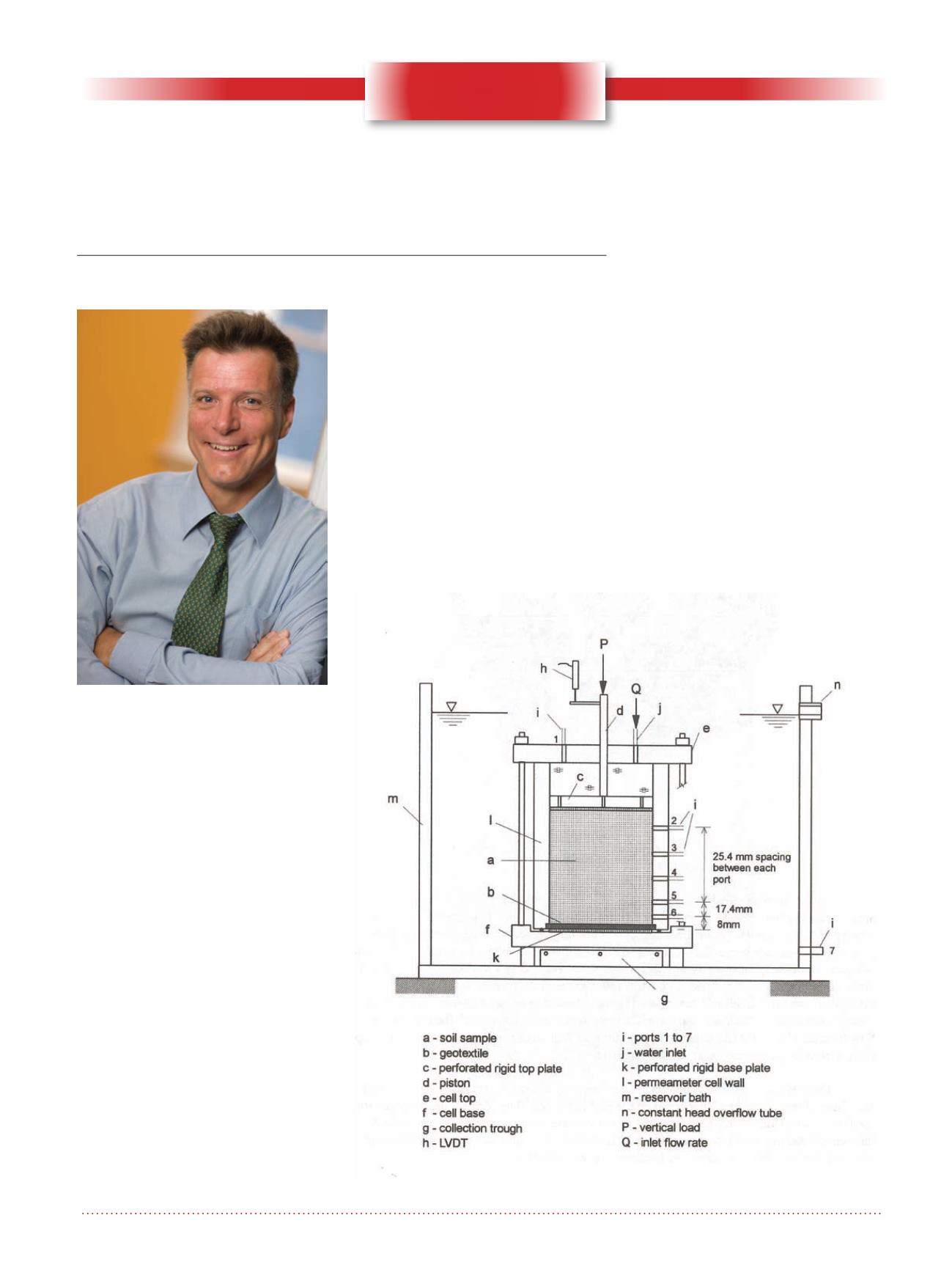
Geotechnical News • September 2015
33
GEOSYNTHETICS
Jonathan Fannin, Editor
Professor of Civil Engineering, University of British Columbia
Writing in this column for the GN
June 2015 issue, I reported on the
material properties of a geotextile, not-
ing that inherent differences between
the manufacturing processes of a
woven and a nonwoven geotextile
impart differences to the opening
size distribution of the fabric and, by
association, differences to the capacity
for flow of water across the plane of
the fabric. Likewise, there is a differ-
ence in tensile strength and stiffness
that results from the manufacturing
process.
The use of a geotextile in filtration
applications is predicated on it having
adequate strength to ensure no adverse
damage throughout the process of
installation (termed ‘construction sur-
vivability’) and that it can also endure,
thereafter, the working environment of
the application (termed ‘durability’).
Upon selecting a suitably strong and
durable geotextile, the requirement
for soil-geotextile filtration compat-
ibility is contingent on there being no
unacceptable erosion as a consequence
of soil loss through the geotextile
while, at the same time, providing for
unimpeded flow of water from the soil
through the geotextile.
It is widely-accepted practice to select
a candidate geotextile for routine
construction works with reference to
(i) criteria for strength and durabil-
ity, given the anticipated method of
construction service environment,
(ii) an empirical rule governing base
soil retention, and (iii) an empiri-
cal rule governing base soil perme-
ability. Typically, the approach has
been found conservative, and yields a
geotextile filter for which the margin
of safety is believed acceptable. How-
ever, the exact nature of that margin of
safety is not quantified – therefore, in
applications that are deemed critical
or severe, the state-of-practice is first
to identify a candidate geotextile on
the basis of the reported values for
Jonathan Fannin
Figure 1. Configuration of the gradient ratio test.


